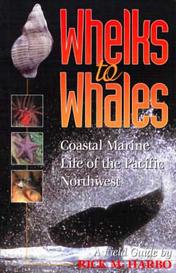United States
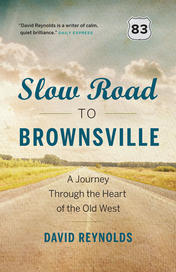
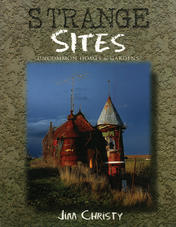
Bottlerama: Gottfried Gabriel (1891-1983) Oliver, British Columbia
On my first trip to Western Canada, in 1970, driving through the Okanagan Valley of B.C., I saw first in my peripheral vision and then in my sideview mirror, a flash of chrome and coloured glass, a cluster of peculiar buildings - and I'm sure there was an old man pushing a wheelbarrow - the entire scene encompassed by sagebrush and desert hills.
It was an interesting old pack rat, I concluded; part of the montage of the road. I sped on by.
Twenty years later, turning the pages of a book on unusual structures, I stopped at a photograph of an old man pushing a wheelbarrow full of hubcaps and bottles. I knew I had seen him before, and I had. The caption identified him as Gottfried Gabriel who lived near Oliver, British Columbia.
Pictures of his work showed that it spread over a considerable property and included bottle buildings and strange monuments of automobile fenders, motor parts, reflectors, wires, garden ornaments. By this time I was living in Vancouver, just 450 kilometers away, and I was planning a business trip to the Okanagan. I decided to go visit Gabriel and his home.
Oliver is a small town, and Gabriel's work had been featured in a lavish coffee table volume available throughout Europe and North America, so everyone there would of course know all about him, which was fortunate since I had only a couple of hours to spare from my other chores.
The first few people I spoke to didn't know what I was talking about. The editor of the local weekly was aware of the place, but when I asked him whether he'd ever done a piece on Gabriel, he answered, "Why would we have done that?"
Then a woman at the historical society gave me both directions to the property, and, alas, the obituary for Gabriel, who died in 1983. She also gave me the only photograph they had--black and white, underexposed, showing another tower, this one topped by what seemed to be a tree welded from metal scraps. It put me in mind of a tree in no man's land in a First World War winter. Other than the death notice, there were no clippings, no pictures, no addresses of relatives, nothing.
It was another year before I returned to the Okanagan and met a Mr. Lehman at Vaseux Lake, who gave me postcard of his next door neighbour, Gottfried Gabriel, who is shown standing beside one of his towers. He is wearing a black cap, blue work shirt and green pants, and he holds a 40-ounce liquor bottle filled with marbles. He is about a third as tall as the monument, the plinth of which seems to be made of concrete sprouting bottle bottoms. All this is clothed in chicken wire festooned with bicycle reflectors and other coloured disks. At the base of the tower are stones, some painted, and more headlamps, plastic flowers and living flowers. A four-foot-tall statue of a Roman goddess stands nearby, and more plastic flowers wind round a concrete column supporting the ubiquitous red-capped garden elf - on whose knee sits a plaster statue of John F. Kennedy.
"Junk. All of it junk," said Mr. Lehman. "He work like crazy. Work, work, work. Then he drop dead." We both stared at the postcard. "But you know," added Mr. Lehman, "there were always people coming to see him. And I think the bastard was happy. So who's crazy?"
Gabriel was of Frisian ancestry, born April 13, 1891, in the Ukraine. He was blind in one eye and rejected for military service. Frisians are Celtic in origin, but Gabriel was pronounced German and ordered to work in logging camps in Siberia. He married when the war ended and emigrated to Canada in 1930. Gabriel farmed near Eatonia, Saskatchewan until 1943 when he moved to Oliver with his wife and son, Eric, who supplied me with most of the biographical details about his father.
In the Okanagan, Gabriel would buy a lot, build a cabin and sell for a profit. Later he constructed small houses and sold them. In the early 1960s, he made a fence of bottles and cement around the family bungalow in Oliver. Next he built a bottle garage, and he was at work on a windmill when the city authorities called a halt to his mania. But Gabriel, who was by then obsessed, purchased the five-hectare site near Vaseux lake, beyond the reach of the building code. Thus in 1966, at the age of seventy-five, Gabriel was able to give full rein to his fantasies. "From then on," says Eric, "he was free and happy."
Eric Gabriel had long since left home by the time his father moved to Vaseux Lake, but from visits he remembers his dad hard at work until the age of ninety, a year before he died. His father made his monuments from bottles, car parts, "musical instruments, statuettes, hot water tanks painted in different colour, and the bar from the old-time gold mining settlement of Fairview."
In the middle of the Vaseux Lake compound was a museum featuring old furniture, farm equipment, riding tack and artifacts donated by the local Indian band chief. Eric reckons there were also 5,000 Christmas tree lights about the place, and when they were all turned on at night the compound glowed like a vast city in the desert. He sent me some photographs of the place and I found a few more. Each picture reveals another corner of the property, another vignette, another piece of a mysterious story. There are windmills, a little church, a giant plywood Santa Claus high in a cottonwood tree, a 150-foot-long house of bottles, and what looks like a miniature railway winding through crushed glass tunnels.
Many far less impressive places in the world have earned their creators notoriety, respect and considerable amounts of money. Gabriel got none of this. He charged no admission, nothing was preserved, and not even the local paper paid him any attention. The book that did mention him, Fantastic Architecture, appeared one year after he died.
Gottfried Gabriel's estate was in contention for five years after his death in 1983, and Eric fought to have at least part of the property preserved or donated to the government for protection. But this was not to be, and during the years of dispute, much of the material was stolen and the property often vandalized. Finally the estate was settled and the land was sold. In a note Eric wrote to me, he said, "Have heard that a house is being built and as far as I know nothing remains, only memories."

The Coastal Companion
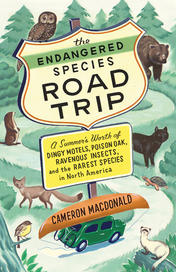
The Endangered Species Road Trip
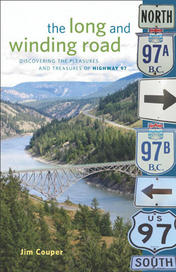
The Long and Winding Road


"Without a doubt, the largest inhabitant of the globe; the most formidable of all whales to encounter, the most majestic in aspect; and lastly, by far the most valuable in commerce." Thus Herman Melville described the sperm whale in his novel Moby Dick, the greatest work of literature inspired by the consuming interest in whales.
Melville was wrong about its size, but the spectacular sperm whale probably comes to mind when most people think of whales. It has been the chief prize of whalers for centuries, the subject of dramatic paintings of conflict between whale and whaler or giant squid, the source of valuable, mysterious ambergris. No wonder this species has particularly captured our imagination. Yet the sperm whale is not a legend, but a real beast, and still occurs in our waters despite long years of whaling. Males have been recorded as long as 60 feet (18m), though females usually grow only to 37 feet (11m). The sperm's huge head, filled with spermaceti oil, dwarfs the narrow long jaw, which alone bears impressive conical teeth. A single blowhole on the left side of its head blows forward and sideways; this alone is enough to identify a sperm whale at sea.
In summer, sperm whales occur offshore along the Pacific northwest coast from the Bering Sea southward. The females tend to stay farther south, the males leave the northern waters in the winter. Of three whales marked off California in January, one was recovered off Washington in June, and another in the Gulf of Alaska in April. Between 1905 and 1966, whalers took more than 5,000 up to 200 miles (321 km) offshore in British Columbia waters, mostly around the Queen Charlottes. Most were mature males up to 46 feet (14m). Each seemed to lead a school of up to thirty females and young. Occasionally sperm whales appear in inshore waters such as Dixon Entrance, Hecate Straight and Queen Charlotte Sound.
Studies of food show that Bering Sea sperm whale's stomachs may contain strange items: stones, rock, sand, a glass buoy, crabs, a coconut, deep sea sponge and cut flesh of a baleen whale. One sperm from California had a shoe in its stomach.
British Columbia specimens were reported to contain dogfish, ragfish, rockfish and skate, though the sperm's principle prey seems to be the squid Moroteuthis robustus, whose 4 foot (1.2m) body may have tentacles over 11 feet (3m) long.
The sperm dives deeply after its prey. Off British Columbia in 1932, an American cable-laying ship All America found a dead sperm tangled in a cable that had been at 3,330 feet (1,014m). Directional hydrophones have tracked much deeper dives elsewhere. On rare occasions, groups of sperm whales strand themselves, as at Florence, Oregon in June 1979.
Although many nations have stopped whaling, until recently Japan and Russia still hunted the sperm whale in the Pacific, taking a reported 7,000 each year. In its size and commercial importance the sperm resembles the few baleen whale species.


